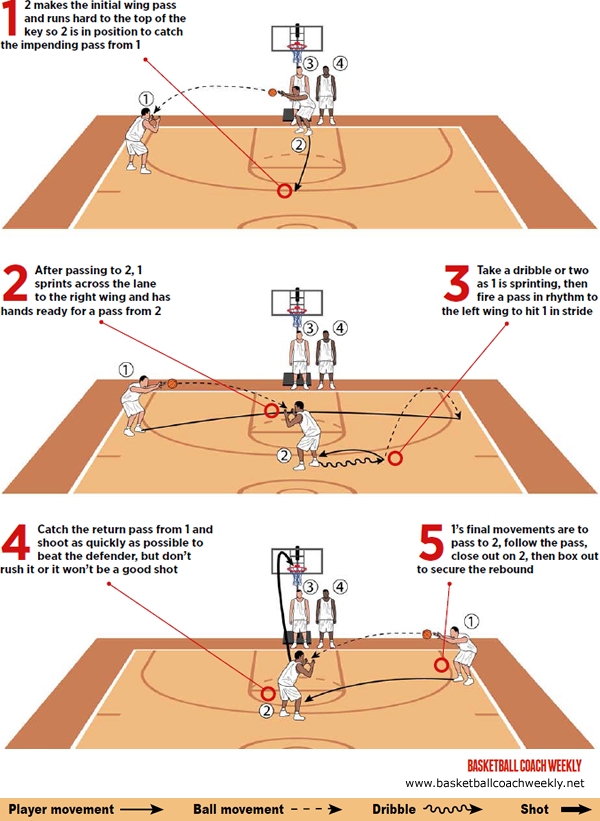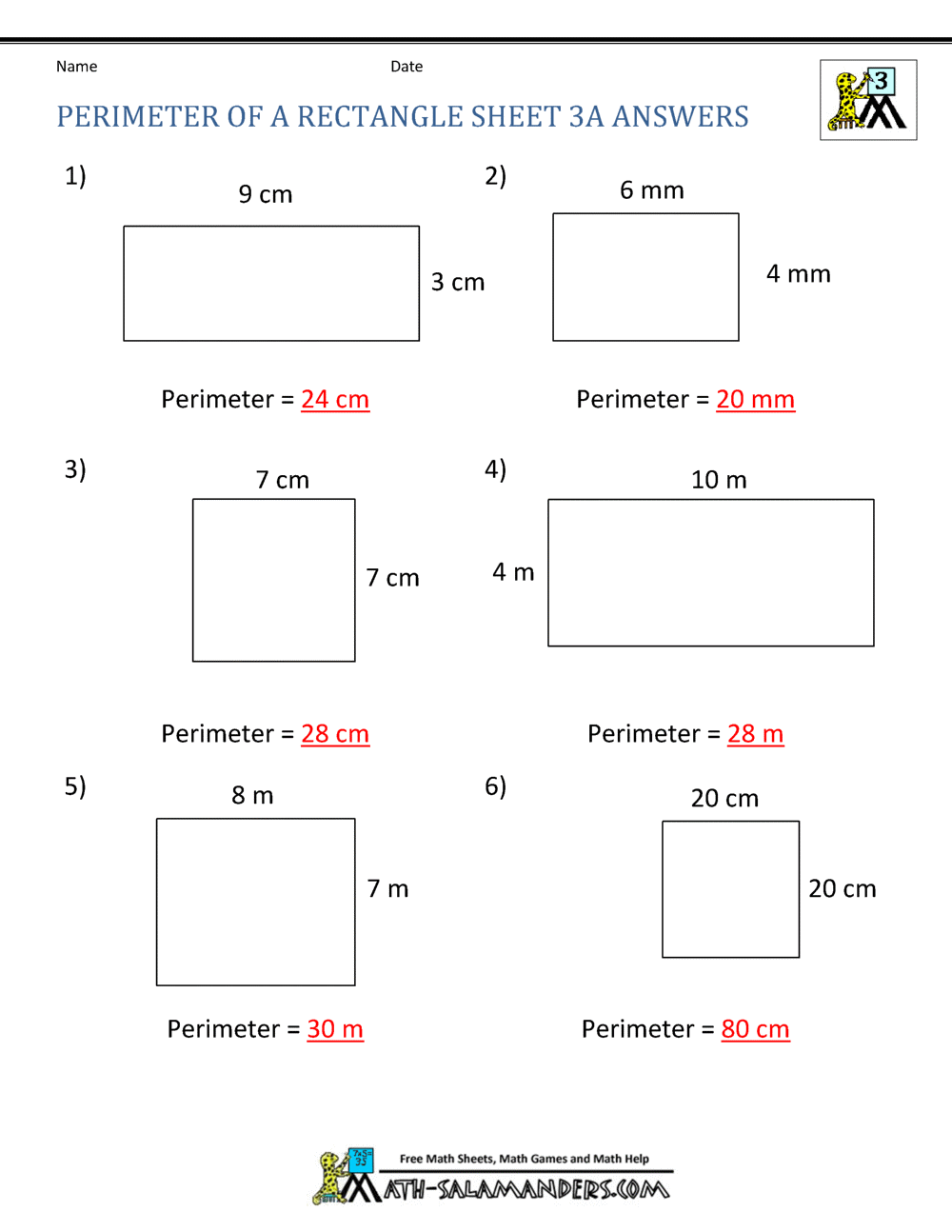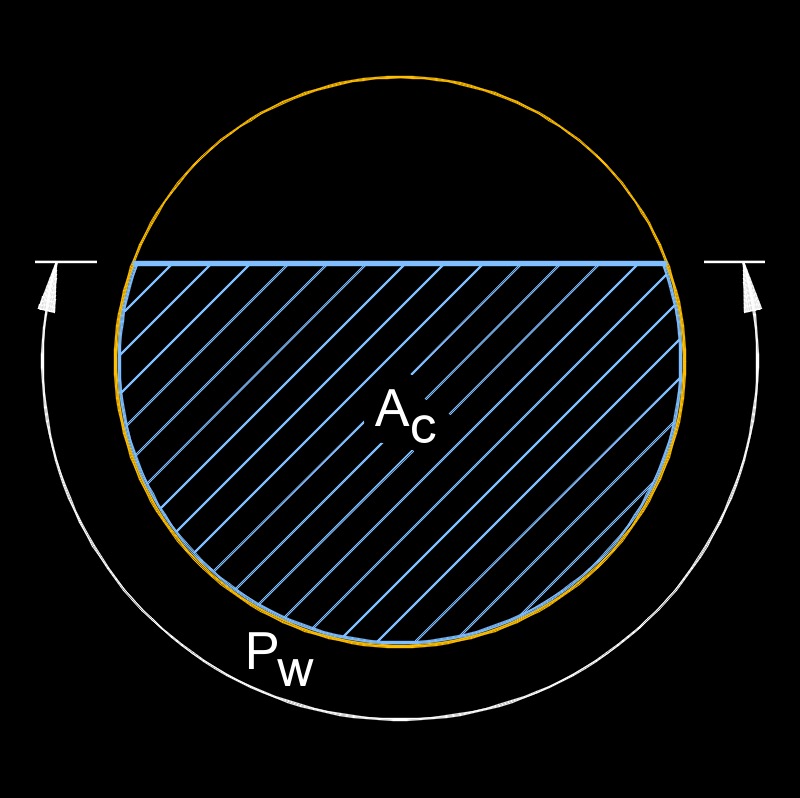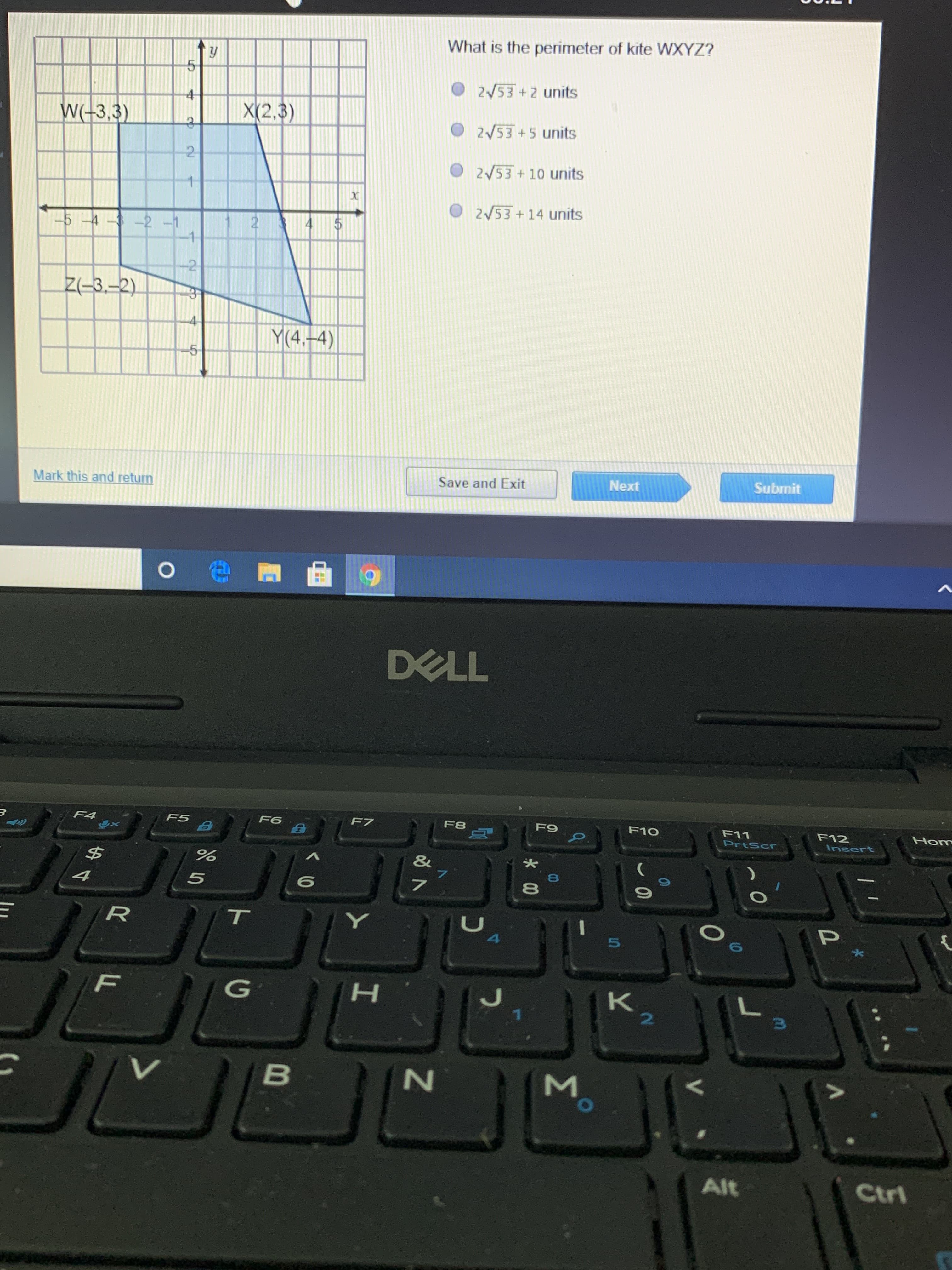Topic perimeter formula for parallelogram: Discover the elegance of geometry with our exploration into the "Perimeter Formula for Parallelogram", a fundamental concept that shapes our understanding of spatial relationships and mathematical beauty.
Table of Content
- Standard Formula and Basic Understanding
- YOUTUBE: Finding the Perimeter of a Parallelogram
- Calculating Perimeter with Different Given Parameters
- Examples and Practical Applications
- Understanding Geometrical Properties of Parallelograms
- Advanced Concepts and Theorems Related to Parallelogram Perimeters
- Frequently Asked Questions and Misconceptions
- Tools and Calculators for Easy Computation
- Links to Further Learning Resources and Interactive Activities
Standard Formula and Basic Understanding
The perimeter of a parallelogram, a fundamental concept in geometry, is the total distance around its edges. It\"s crucial in various applications, from architecture to land surveying. The standard formula to calculate the perimeter of a parallelogram is P = 2(a + b), where \"a\" and \"b\" are the lengths of the adjacent sides.
- Understanding the Formula: The parallelogram has two pairs of parallel sides. In the formula P = 2(a + b), \"a\" and \"b\" represent the lengths of these pairs of opposite sides. Since opposite sides of a parallelogram are equal, the perimeter is twice the sum of two adjacent sides.
- Geometric Properties: This formula is derived from the properties of a parallelogram where opposite sides are not only parallel but also equal in length. Hence, adding the lengths of all four sides simplifies to 2 times the sum of two adjacent sides.
- Real-world Applications: This formula is used in various real-world scenarios, like calculating the amount of material needed for a border around a parallelogram-shaped garden or the fencing required for a parallelogram-shaped plot of land.
Understanding this formula not only helps in solving geometric problems but also lays the groundwork for more complex mathematical concepts. It demonstrates how geometry is interconnected and how basic principles form the foundation of more advanced studies.

READ MORE:
Finding the Perimeter of a Parallelogram
Perimeter: Are you curious about how to find the perimeter of various shapes? Watch this engaging video, where we explore different methods and tricks to calculate the perimeter effortlessly! Discover the secrets of this fundamental concept and become a geometry pro in no time!
Calculating Perimeter with Different Given Parameters
Calculating the perimeter of a parallelogram can vary based on the given parameters. The basic formula, P = 2(a + b), applies when the lengths of adjacent sides are known. However, there are scenarios where other dimensions are given, and different approaches are required.
- Using Diagonals and an Angle: If the lengths of the diagonals and one angle are known, the formula can be adjusted to accommodate these values. This involves more complex calculations using trigonometric functions to determine the lengths of the sides before applying the standard perimeter formula.
- Base, Height, and an Angle: In cases where the base, height, and an angle are provided, the sine function is used to calculate the perimeter. This method is particularly useful in practical applications such as land surveying where direct measurement of sides is not feasible.
- Practical Examples:
- If only one side and diagonals are known, use the parallelogram law and trigonometric identities to find the missing sides.
- For a parallelogram with known base and height, apply the trigonometric formula involving the sine of the given angle to find the perimeter.
These methods highlight the versatility of geometry in solving real-world problems and emphasize the importance of understanding various properties of shapes like parallelograms.
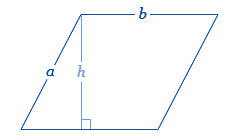
Calculating Area and Perimeter of Parallelograms
Calculating: Unlock the hidden world of calculations with this mind-blowing video! From basic arithmetic to complex mathematical equations, we unveil the art of calculating in a fun and simplified manner. Discover genius shortcuts and techniques that will save you time and impress your friends!
Discovering the Area of Parallelograms
Area: Dive into the fascinating world of area measurement by watching this captivating video! Learn how to easily calculate the area of different shapes, including circles, triangles, and rectangles. With step-by-step explanations and real-life examples, you\'ll gain a solid understanding of this essential concept and its applications.
Examples and Practical Applications
Understanding the perimeter formula for a parallelogram is not just a theoretical exercise; it has practical applications in various fields. Let\"s explore some examples and real-world scenarios where this knowledge is applied.
- Example in Architecture: Consider an architect designing a roof in the shape of a parallelogram. If the sides of the roof are 30 meters and 20 meters respectively, the perimeter would be calculated using P = 2(a + b) = 2(30 + 20) = 100 meters. This measurement is crucial for estimating materials needed for the roof\"s construction.
- Land Surveying: Land surveyors often deal with plots of land that are parallelogram-shaped. Knowing the perimeter formula helps them calculate the total boundary length of the property, which is essential for legal and construction purposes.
- Example in Gardening: If a gardener wants to fence a parallelogram-shaped flower bed with sides of 15 feet and 25 feet, the perimeter calculation (P = 2(15 + 25) = 80 feet) informs them about the length of the fencing material needed.
- Educational Applications: In educational settings, students are often given problems where they need to calculate the perimeter of parallelograms with various given parameters. These exercises enhance their problem-solving skills and understanding of geometry.
- Decorative Arts: Artists and designers working on parallelogram-shaped mosaics or artworks use the perimeter formula to calculate the framing or boundary length of their art pieces.
These examples demonstrate how the perimeter formula for parallelograms is applied in everyday situations, showing the relevance of geometric principles in practical life.
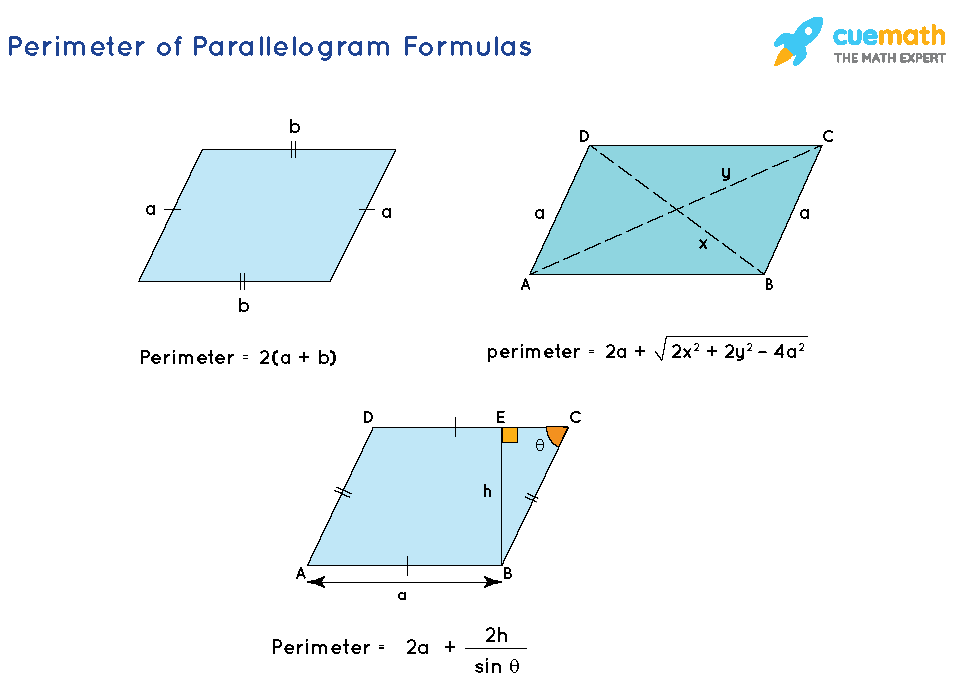
Understanding Geometrical Properties of Parallelograms
Parallelograms are fascinating geometric figures with unique properties that make them a significant topic in geometry. Understanding these properties is crucial for grasping how the perimeter formula works and why it\"s essential in various calculations.
- Parallel and Equal Opposite Sides: A defining feature of parallelograms is that opposite sides are both parallel and equal in length. This property forms the basis of the perimeter formula, as it allows the simplification of the total boundary length to twice the sum of adjacent sides.
- Angles and Diagonals: In parallelograms, opposite angles are equal, and adjacent angles are supplementary (adding up to 180 degrees). Diagonals of a parallelogram bisect each other, but are not necessarily equal. These properties influence complex perimeter calculations involving angles and diagonals.
- Transformations and Symmetry: Parallelograms exhibit translational and rotational symmetry, making them integral in pattern formation and design. Their ability to tessellate, or tile a plane without gaps, is a key concept in art and architecture.
- Area Calculation: The area of a parallelogram is another fundamental concept, calculated as the base multiplied by the height. This is directly related to the perimeter when assessing the extent of a given shape.
- Real-World Shapes: Recognizing parallelograms in the real world, such as in building designs and everyday objects, helps in applying mathematical concepts to practical problems.
Through these properties, parallelograms not only offer a wealth of mathematical exploration but also bridge the gap between theoretical geometry and its practical applications.

Advanced Concepts and Theorems Related to Parallelogram Perimeters
Parallelograms are not just basic geometric shapes; they are tied to several advanced mathematical concepts and theorems. These advanced topics provide a deeper understanding of the properties and applications of parallelograms, particularly in relation to their perimeters.
- Parallelogram Law in Vector Mathematics: This law states that the sum of the squares of the sides of a parallelogram equals the sum of the squares of its diagonals. This is crucial in physics and engineering, where vectors are often represented as parallelograms.
- Application in Trigonometry: The properties of parallelograms are closely related to trigonometric functions, especially when calculating perimeters involving angles and diagonal lengths. This is often used in more complex architectural and engineering designs.
- Theorems Involving Parallelograms: Various theorems, such as Varignon\"s Theorem, which states that the midpoints of any quadrilateral form a parallelogram, play a pivotal role in understanding geometric relationships and properties.
- Transformation Geometry: Parallelograms are central to the study of transformations, such as translations, rotations, and reflections. This has applications in computer graphics and design where understanding the perimeter helps maintain proportion and balance.
- Parallelograms in Coordinate Geometry: Analyzing parallelograms on the Cartesian plane involves using algebraic methods to calculate perimeters, especially when the coordinates of the vertices are known.
These advanced concepts demonstrate the extensive reach of parallelograms in mathematics and beyond, offering insights into complex problems and real-world applications.

_HOOK_
Frequently Asked Questions and Misconceptions
When studying the perimeter formula for parallelograms, certain questions and misconceptions commonly arise. Addressing these can deepen understanding and correct any misconceptions about this geometric concept.
- Is the formula for the perimeter of a parallelogram the same as a rectangle? While similar, they are not always identical. The parallelogram formula (P = 2(a + b)) is used when opposite sides are equal but not necessarily perpendicular, unlike rectangles.
- Can the perimeter be calculated if only diagonals are known? Calculating the perimeter from diagonals alone is complex. Additional information, like side length or angles, is typically needed to use the diagonals in perimeter calculations.
- Are all sides of a parallelogram equal? This is a common misconception. In parallelograms, only opposite sides are equal and parallel, not necessarily all four sides.
- Does the perimeter change with the angles of a parallelogram? The perimeter remains constant regardless of the angles between the sides, as it depends solely on the lengths of the sides.
- Can any four-sided figure be considered a parallelogram? No, only those with two pairs of parallel and equal-length opposite sides qualify as parallelograms.
Understanding these FAQs and misconceptions helps in gaining a more accurate and comprehensive grasp of the properties and calculations related to parallelograms.

Tools and Calculators for Easy Computation
In the digital age, a variety of online tools and calculators are available to simplify the computation of the perimeter of parallelograms. These resources are particularly useful for students, educators, and professionals who require quick and accurate results.
- Online Parallelogram Perimeter Calculators: These calculators allow users to input the lengths of the sides, and some even accommodate inputs like diagonals and angles. They provide an instant calculation of the perimeter, making them a go-to resource for quick computations.
- Geometric Drawing Tools: Software like GeoGebra offers tools for drawing parallelograms and automatically calculating their perimeters. This is particularly useful in educational settings for visualizing geometric concepts.
- Mobile Apps: There are numerous mobile applications available for both iOS and Android devices that can calculate the perimeter of parallelograms. These apps often include additional features like solving related geometric problems.
- Spreadsheet Programs: Tools like Microsoft Excel can be used to create formulas for calculating the perimeter of a parallelogram, especially useful in data analysis and mathematical modeling.
- Interactive Websites: Educational websites provide interactive modules where users can manipulate the dimensions of a parallelogram and observe the changes in its perimeter. This is an excellent way to understand the relationship between side lengths and perimeter.
With these tools, calculating the perimeter of a parallelogram becomes a more accessible and engaging task, supporting a wide range of educational and professional activities.

Links to Further Learning Resources and Interactive Activities
For those seeking to deepen their understanding of the perimeter formula for parallelograms, there are numerous resources available online. These include educational websites, interactive simulations, and detailed tutorials that cater to different learning styles.
- Educational Websites: Websites like Khan Academy and Math is Fun offer comprehensive lessons on parallelograms and their properties, including interactive quizzes and exercises for self-assessment.
- Interactive Simulations: Platforms such as GeoGebra provide interactive tools where learners can manipulate parallelograms and see the effects on perimeter in real-time, enhancing their conceptual understanding.
- Video Tutorials: YouTube channels dedicated to mathematics education often have detailed video tutorials explaining the perimeter formula for parallelograms and related concepts, suitable for visual learners.
- Mathematical Blogs and Forums: Blogs like Wolfram MathWorld and forums such as Stack Exchange Math offer in-depth discussions and insights on advanced topics related to parallelograms, suitable for learners seeking deeper knowledge.
- Downloadable Worksheets: Many educational sites offer downloadable practice worksheets that provide additional exercises for mastering the perimeter calculation of parallelograms.
These resources are invaluable for students, teachers, and anyone interested in exploring the fascinating world of geometry and its applications.
Exploring the perimeter formula for parallelograms opens doors to a deeper appreciation of geometry\"s elegance and practicality. Whether for academic growth or real-world applications, this journey into geometrical understanding is both enriching and essential.




